You’ve probably fumbled for the TV remote countless times, only to find it wedged between couch cushions or completely missing. A voice-controlled entertainment center eliminates that frustration by letting you command your entire media setup with simple spoken instructions. Instead of juggling multiple remotes and steering through complex menus, you’ll discover how these smart systems can transform your living room into a seamlessly integrated entertainment hub that responds instantly to your voice.
Understanding Voice-Controlled Entertainment Systems
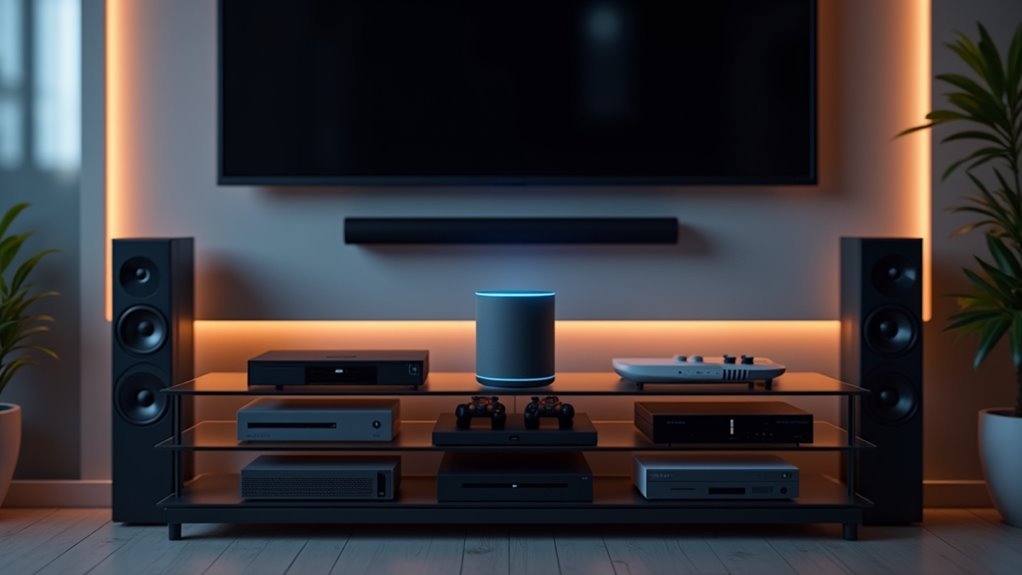
Voice-controlled entertainment systems transform how you interact with your home media setup by eliminating the need for traditional remotes and complex navigation menus.
These systems integrate seamlessly with popular voice assistants like Google Assistant and Amazon Alexa, allowing you to control your TV, streaming devices, and audio equipment through simple spoken commands.
Transform your entertainment experience with seamless voice assistant integration that controls all your devices through simple spoken commands.
You can change channels, adjust volume levels, search for specific content, and switch between streaming platforms using natural voice control. The technology recognizes your verbal instructions and executes them instantly across connected devices.
Modern systems support major streaming services including Netflix, YouTube, and Disney+, making content discovery effortless. Advanced models also connect with smart home ecosystems, enabling you to manage lighting, temperature, and other connected devices while enjoying your entertainment experience.
Essential Components for Your DIY Voice Assistant Hub
You’ll need specific hardware components to build an effective voice assistant hub that can control your entire entertainment system.
The software you choose for voice recognition will determine which devices can integrate seamlessly with your setup.
Setting up device integration requires careful planning to guarantee all your smart components communicate properly with each other.
Smart Hub Hardware Requirements
Building a DIY voice assistant hub requires five essential hardware components that’ll serve as the foundation for your entertainment center.
These core elements work together to create a thorough smart hub that leverages advanced voice technology for seamless control.
Your hardware shopping list includes:
- Compatible microphone – USB or Bluetooth options for clear voice command capture
- Robust processor – Raspberry Pi or equivalent for handling voice recognition tasks
- Reliable Wi-Fi connection – Essential for cloud service communication and device integration
- Smart speakers or displays – Output devices for audio feedback and visual information
- Smart plugs and streaming devices – Expandable components for controlling your entertainment ecosystem
Each component plays a vital role in creating a responsive, integrated system that transforms your traditional entertainment setup into an intelligent, voice-controlled environment.
Voice Recognition Software Options
Once you’ve assembled your hardware components, selecting the right voice recognition software becomes your next critical decision.
You’ll find several powerful options for your smart control setup. Google Assistant SDK, Amazon Alexa Skills Kit, and Microsoft Azure Speech Services provide robust frameworks with extensive customization capabilities.
For greater flexibility, consider open-source alternatives like Mozilla’s DeepSpeech and Mycroft, which offer strong community support and tailored solutions.
These platforms utilize natural language processing to interpret your commands intelligently. Advanced systems incorporate machine learning algorithms that adapt to your speech patterns over time, improving accuracy.
You can enhance functionality through IFTTT integration, creating custom voice commands that control multiple devices simultaneously. This voice recognition approach guarantees seamless entertainment center management through simple vocal instructions.
Device Integration Setup Process
After establishing your voice recognition foundation, setting up device integration requires careful selection of compatible hardware components that’ll communicate effectively with your chosen platform.
You’ll need smart home devices that support voice control and can connect to your Wi-Fi network alongside your central hub.
Essential components for successful device integration include:
- Smart TVs with built-in voice control capabilities
- Compatible sound systems and speakers
- Streaming devices that support voice commands
- Smart lighting for ambient control
- Universal remote alternatives for legacy equipment
Use your platform’s dedicated app to link these smart home devices, ensuring they’re all connected to the same network.
Create custom routines within the app to streamline commands, and regularly update firmware to maintain ideal performance and compatibility across your integrated entertainment system.
Compatible Smart TV Options and Voice Integration
You’ll need a smart TV that seamlessly connects with your chosen voice assistant to create an effective entertainment hub.
Modern smart TVs from Sony, TCL, LG, Samsung, and Hisense offer built-in compatibility with popular voice assistants like Google Assistant, Alexa, and Bixby.
Your TV’s voice integration capabilities will determine how smoothly you can control streaming services, adjust settings, and navigate content using only voice commands.
Smart TV Models
Today’s smart TV market offers numerous models that seamlessly integrate voice control technology, transforming how you interact with your entertainment system.
These smart TVs respond to voice commands, eliminating the need for traditional remotes in many situations.
Popular models include:
- Sony 65 Class X77L and LG 55″ Class UR9000 with built-in Google Assistant
- TCL 40 Class S3 S-Class LED providing access to 700,000+ movies and shows
- Roku 75 Class Plus Series QLED featuring no-battery voice remote
- Samsung 114″ Class MICRO LED supporting multiple assistants (Bixby, Alexa, Google)
- Hisense and TCL models enhancing accessibility through voice integration
You’ll find these smart TVs enable effortless channel changes, content searches, and streaming navigation through simple voice commands, creating a truly hands-free entertainment experience.
Voice Assistant Integration
When you’re setting up your voice-controlled entertainment center, choosing compatible smart TVs becomes essential for seamless integration with your preferred voice assistants.
Popular models like Sony 65 Class X77L and TCL 40 Class S3 support voice commands through built-in Google Assistant and Alexa, enabling hands-free navigation. You can change channels, adjust volume, and access streaming services without touching a remote.
Smart TVs such as the Roku 75 Class Plus Series feature preloaded apps with voice search capabilities for quick content discovery.
Advanced models like Hisense 75 Class U8 Series and Samsung MICRO LED support multiple voice assistants, creating a unified smart home ecosystem. These TVs also provide personalized recommendations based on your viewing history, enhancing your entertainment experience with tailored content suggestions.
Setting Up Google Assistant for Entertainment Control

Although smart TVs and streaming devices offer countless entertainment options, Google Assistant transforms how you interact with your media by enabling seamless voice control.
Setting up this powerful integration requires a few essential steps to guarantee peak functionality.
Follow these key setup requirements:
- Verify your smart TV or streaming device supports Google Assistant compatibility
- Connect all devices to the same Wi-Fi network as your Google Home or smartphone
- Link your Google account through the Google Home app for voice command access
- Navigate to device settings and activate voice recognition features
- Keep software and Google Assistant app updated for latest functionalities
Once configured, you’ll control your entertainment using specific commands like “Play Netflix on living room TV” or “Turn up the volume.”
This hands-free approach revolutionizes your viewing experience.
Configuring Amazon Alexa With Your Media Devices
Amazon Alexa offers equally impressive entertainment control capabilities that rival Google Assistant’s functionality.
You’ll need to verify your devices are compatible and connected to the same Wi-Fi network as your Alexa device. Use the Alexa app to discover and connect supported streaming services and devices, including your smart TV, sound systems, and streaming sticks.
Enable relevant skills like Netflix or Hulu in the app to allow voice commands for playback control. You can then use commands like “Alexa, play [show name] on [device]” to start streaming content directly.
This voice data integration creates seamless entertainment control throughout your home.
Remember to regularly check for software updates on both your Alexa device and media devices to maintain peak performance and compatibility.
Connecting Streaming Services to Voice Commands
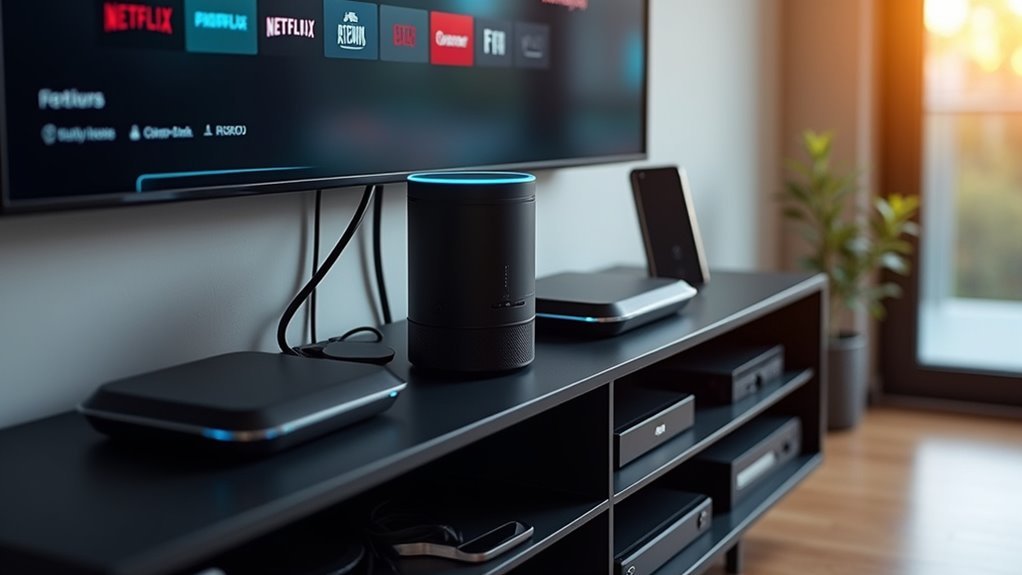
Once you’ve established your voice assistant setup, you’ll want to link your favorite streaming platforms directly to enable hands-free content control. This connection enables seamless navigation through your entertainment options using simple voice commands.
To connect streaming services effectively:
- Link your Netflix, Hulu, Disney+, and other accounts through your voice assistant’s app
- Enable voice recognition features on all connected devices
- Test basic commands like “Play [show name] on [platform]”
- Configure account preferences for personalized recommendations
- Verify payment methods are current for premium content access
After setup, you can issue commands such as “Search for action movies on Hulu” or control playbook features like pausing and volume adjustment.
This integration transforms your entertainment experience, eliminating the need for traditional remote controls while providing instant access to your streaming services.
Audio System Integration and Voice-Activated Sound Control
Your entertainment center’s audio capabilities reach their full potential when integrated with voice-activated sound control systems. You can adjust volume levels, skip tracks, and switch between audio sources using simple voice commands through built-in assistants like Google Assistant or Alexa.
Smart speakers serve as the central hub, connecting seamlessly with your existing audio equipment to create a hands-free listening experience.
Advanced systems recognize individual voices, automatically applying personalized sound settings based on your preferences. You’ll enjoy multi-room audio control, managing speakers throughout your home with single commands.
Whether you’re requesting specific playlists from streaming services or fine-tuning bass levels, voice-activated sound control eliminates the need for multiple remotes while providing instant access to your entertainment options.
Smart Home Device Synchronization With Entertainment Centers
Beyond audio management, voice-controlled entertainment centers serve as powerful command hubs that synchronize with your entire smart home ecosystem. You can control lighting, temperature, and security systems through simple voice commands while enjoying your entertainment.
Sony and LG TVs with built-in Google Assistant enable seamless device synchronization throughout smart homes.
Popular ecosystems like Google Home and Amazon Alexa support unified control experiences through advanced voice processing technology:
- Set automated routines for movie nights with dimmed lighting
- Adjust thermostat settings during entertainment sessions
- Control security cameras and door locks
- Synchronize sound systems across multiple rooms
- Manage streaming apps hands-free
You’ll enjoy enhanced convenience by eliminating multiple remotes and creating personalized entertainment environments that respond to your voice commands instantly.
Custom Voice Commands and Automation Setup
You can transform your entertainment center into a truly personalized experience by creating custom voice commands that trigger multiple actions with a single phrase.
Setting up IFTTT integration allows you to program commands like “Movie night” to automatically dim your lights, power on your TV, and launch your preferred streaming app simultaneously.
Smart home automation takes this further by connecting your entertainment devices with other household systems, creating seamless routines that adapt to your viewing habits.
Creating Custom Commands
While most voice assistants come with pre-programmed commands, creating custom voice commands transforms your entertainment center into a truly personalized experience.
You’ll find that platforms like IFTTT make building these custom commands straightforward, allowing you to trigger multiple actions with a single phrase.
Your voice-controlled system can handle sophisticated requests through natural language processing.
Consider these practical custom commands you can create:
- “Movie time” – dims lights, turns on TV, and opens Netflix
- “Play my movie playlist” – instantly accesses your favorite films
- “Find comedies starring Jennifer Aniston” – searches specific genres and actors
- “Gaming mode” – adjusts lighting and sound settings automatically
- “Bedtime entertainment” – lowers volume and dims all lights
Remember to regularly update your voice assistant’s software to maintain peak performance of your custom commands.
IFTTT Integration Setup
Setting up IFTTT transforms your entertainment center from a collection of separate devices into a unified, voice-controlled ecosystem.
You’ll start by creating an IFTTT account and connecting your compatible devices and services. The platform’s pre-built applets library simplifies setup for popular entertainment devices, eliminating technical complexity.
Connect your Google Assistant to enable voice triggers for multi-device automation. You can create commands like “Movie night” that simultaneously turns on your TV, adjusts lighting, and activates your sound system.
IFTTT’s interface guides you through customizing triggers and actions, allowing complex scenarios with single voice commands.
Follow the step-by-step prompts to link apps and devices, then test your automation routines. This integration maximizes your entertainment center’s potential through seamless, voice-activated control across all connected components.
Smart Home Automation
Beyond connecting devices through IFTTT, creating custom voice commands amplifies your entertainment center’s automation capabilities.
You’ll transform basic device control into sophisticated smart home automation that responds to your specific needs and preferences.
Setting up all-encompassing automation involves configuring your central hub with personalized routines. You can create scenario-based commands like “movie night” that simultaneously dims lights, turns on your TV, launches Netflix, and adjusts audio settings with a single voice command.
Essential automation setup steps include:
- Linking all compatible devices to your central hub
- Creating custom voice commands for different entertainment scenarios
- Testing command responsiveness and accuracy
- Updating device software regularly for peak performance
- Ensuring cross-device compatibility with your voice assistant
This smart home automation approach streamlines your entertainment experience considerably.
Android TV Box Solutions for Voice Control Enhancement
Although standard televisions lack built-in smart features, Android TV boxes like the Leap S3+, Leap S3 PRO, and SRT 41 can transform them into voice-controlled entertainment hubs.
You’ll get seamless Google TV integration with preloaded Android TV OS, enabling hands-free control through “Hey Google” and “Ok Google” commands. This voice control lets you search content, manage playback, and navigate menus without touching a remote.
Setup’s straightforward—just connect the device to your TV’s HDMI port and Wi-Fi network.
You’ll instantly access over 700,000 movies and shows from various streaming platforms while enjoying 4K resolution and HDR content.
These Android TV boxes deliver both advanced voice control capabilities and high-quality visual experiences, making them cost-effective solutions for upgrading older televisions into modern smart entertainment systems.
Troubleshooting Common Voice Recognition Issues
Why does your voice-controlled entertainment center sometimes fail to understand your commands?
Voice recognition issues often stem from simple configuration problems or environmental factors that you can easily fix.
Most voice control problems have straightforward solutions involving basic settings adjustments or minor environmental changes you can implement yourself.
Common troubleshooting steps include:
- Check microphone status – Confirm it’s not muted or physically blocked
- Update software/firmware – Install latest versions for improved voice recognition capabilities
- Speak clearly – Use moderate volume and clear pronunciation to avoid misinterpretation
- Maintain proper distance – Stay within ideal range for microphone sensitivity
- Configure voice settings – Adjust recognition settings for your specific voice, accent, or dialect
While addressing these technical issues, remember that privacy concerns may arise when troubleshooting requires resetting voice profiles or sharing diagnostic data with manufacturers.
Always review privacy settings before enabling enhanced voice recognition features.
Security and Privacy Considerations for Voice-Activated Systems
When you use voice-controlled entertainment systems, you’re sharing audio data that companies collect, store, and potentially share with third parties for advertising purposes.
Your device’s always-listening microphones can trigger unintended recordings, creating privacy risks you mightn’t realize exist.
You’ll want to understand what data these systems gather and implement protective measures to safeguard your personal information from unauthorized access.
Data Collection Practices
As you interact with your voice-controlled entertainment center, it’s collecting far more data than just your spoken commands.
These sophisticated data collection practices extend beyond voice interactions to capture ambient sounds, viewing preferences, and behavioral patterns that build thorough user profiles.
Your personal information faces several privacy and security risks:
- Voice recordings transmitted to cloud servers during processing
- Data sharing with advertisers and third-party brokers
- Ambient sound capture that may record private conversations
- Storage of personal preferences and viewing habits
- Potential interception during data transmission
Understanding these practices helps you make informed decisions about your entertainment system.
You’ll want to regularly review privacy policies, delete stored audio recordings, and enable two-factor authentication to protect your data from unauthorized access.
Privacy Protection Measures
Taking control of your privacy requires implementing specific protective measures that go beyond basic awareness of data collection.
Start by enabling two-factor authentication on your voice-controlled devices to add essential security layers against unauthorized access. Review and adjust privacy settings regularly to limit how your voice data gets shared with third-party companies for advertising purposes.
Make deleting recorded audio a routine practice, and thoroughly understand your device’s terms of service. These privacy protection measures help minimize risks from data misuse.
Stay vigilant about unintentional triggers that cause devices to record conversation snippets without your consent. Position devices strategically away from private areas, and consider muting capabilities when you don’t need voice activation to maintain better control over your personal information.
Advanced Features and Multi-Room Entertainment Control
Beyond basic voice commands, sophisticated entertainment centers release powerful capabilities that transform how you control your entire home’s media ecosystem.
These advanced features enable seamless multi-room entertainment control, letting you synchronize audio and video across different spaces with simple voice instructions.
You’ll discover extensive customization options through these capabilities:
- Custom voice commands for personalized lighting, temperature, and entertainment scenarios
- Multi-room audio synchronization across your entire house
- Learning algorithms that adapt to your viewing preferences and habits
- Integration with popular voice assistants like Google Assistant and Amazon Alexa
- Coordinated control of streaming services, sound systems, and smart home devices
The system learns your patterns, automatically suggesting content and adjusting settings based on your preferences, creating a truly intelligent entertainment environment.
Cost-Effective DIY Assembly and Installation Tips
While professional installations can cost thousands of dollars, you can build your own voice-controlled entertainment center for a fraction of that price using readily available smart devices and some strategic planning.
Start with a smart speaker like Amazon Echo or Google Home ($50-$100) as your central hub. Add smart plugs and streaming devices such as Roku or Chromecast ($30-$100) to control existing equipment through voice commands.
A smart speaker hub paired with affordable streaming devices creates the foundation for voice-controlled entertainment without breaking the budget.
Before purchasing, verify your TV and appliances support Google Assistant or Alexa compatibility. Create cost-effective storage using DIY shelving or modular solutions for under $50.
Follow free online tutorials for setup and configuration, eliminating expensive professional installation fees while achieving the same functionality.
Frequently Asked Questions
Do You Need Internet for Voice Activated TV?
You’ll need internet for most voice-activated TV features. While basic commands like volume control might work offline, streaming services, content search, and cloud-based voice recognition require an active internet connection.
What Is an Entertainment Center Used For?
You’ll use an entertainment center to organize and house your audio-visual equipment like TVs, gaming consoles, and sound systems. It’ll also store your media collections while managing cables and enhancing your room’s appearance.
What Is an Example of a Voice Activated Technology?
You’ll find Google Assistant as a prime example of voice-activated technology. It lets you control entertainment devices by saying commands like “Play Stranger Things on Netflix” or “Turn up the volume” effortlessly.
What Does Voice Control Do?
Voice control lets you operate devices using spoken commands instead of manual controls. You’ll speak instructions to change settings, launch apps, search content, or adjust features without touching buttons, remotes, or screens.

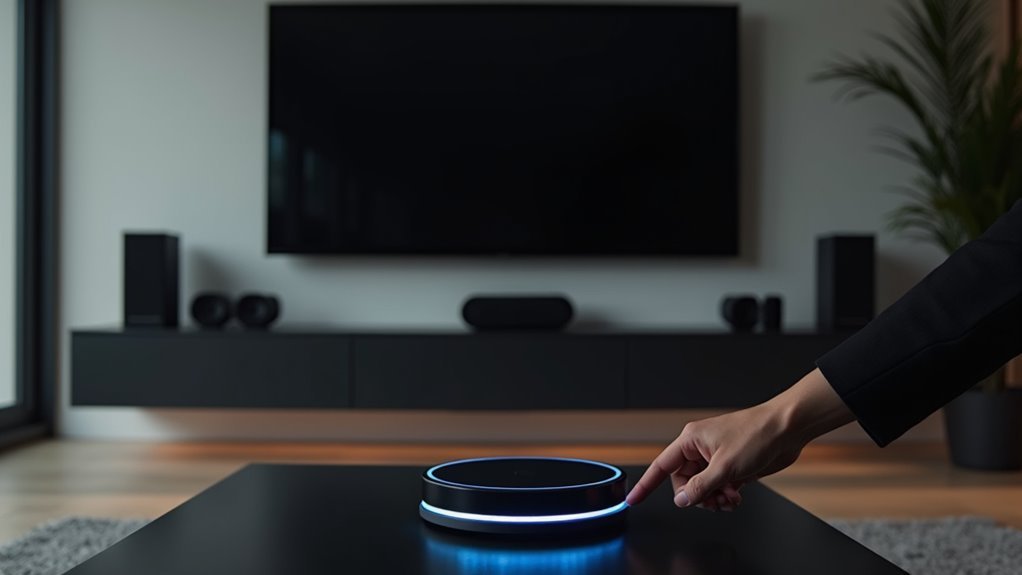
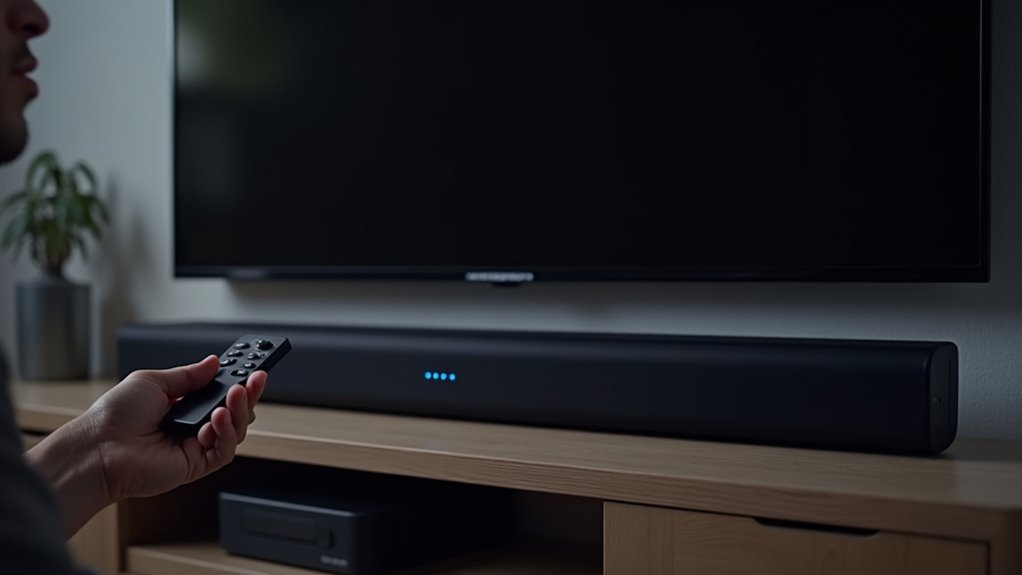
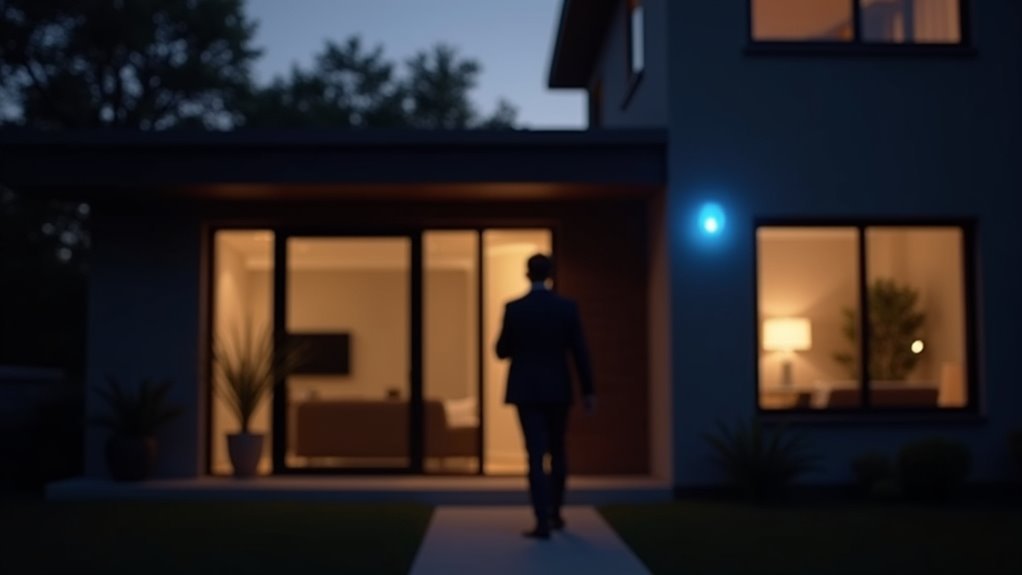
Leave a Reply